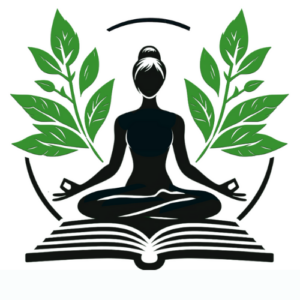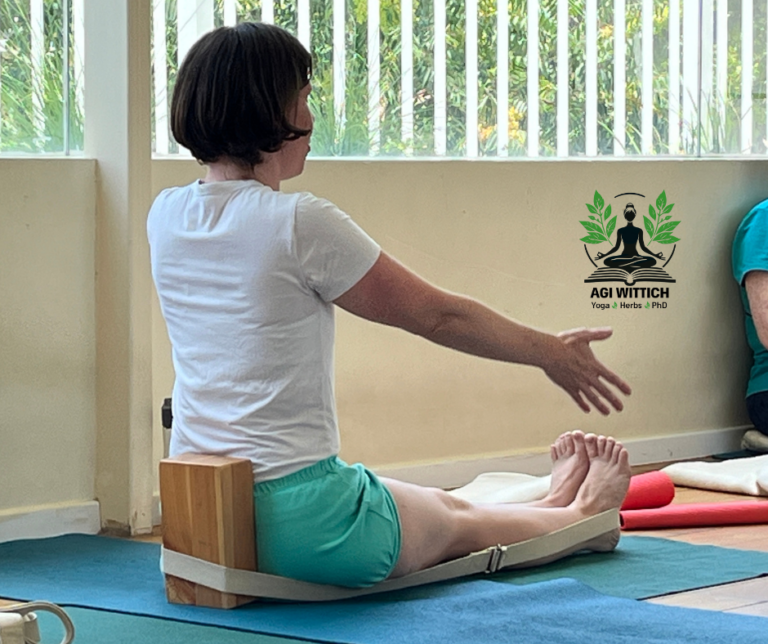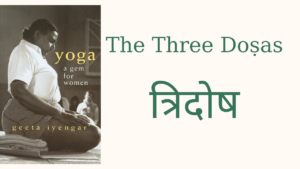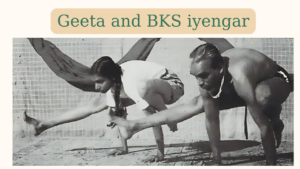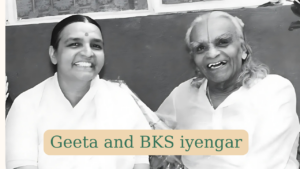In the ever-evolving landscape of modern yoga practice, props have emerged as essential tools for practitioners seeking both physical support and emotional stability. The Iyengar Yoga tradition, in particular, has pioneered the intentional use of props, transforming them from simple accessories into powerful instruments of practice enhancement.
B.K.S. Iyengar’s profound insight that “our primary prop is our own body” set the stage for a revolutionary approach to yoga practice. This philosophy acknowledges that while our body is our fundamental tool, additional props can serve as extensions of our natural capabilities, creating bridges to deeper understanding and more stable practice.
Essential Props in the Iyengar Tradition include yoga mats, belts, bolsters, wooden or foam blocks, but also walls, chairs, ropes and more.
Creating Security Through Physical Boundaries
One of the most significant benefits of prop usage is the establishment of clear, physical boundaries during practice. Practicing with the wall can enhance stability through direct contact, which is also helpful with balance. It can offer options for varying levels of support – as the full back can be placed at the wall, or it can be pressed with one or two hands, one or two legs. It can also offer a lighter connection – when using only the fingertips at the wall. And even without without physical contact – the wall can be a visual anchoring point. Chair can also offer stability in seated or standing support, and wooden blocks providing adjustable height options.
In our current times, when many experience a pervasive sense of instability, props offer more than physical support—they provide psychological anchoring. The grounding benefits manifest primarily through tactile awareness and confidence building. When practitioners engage with props, they receive immediate sensory feedback that anchors them in the present moment. This tangible connection helps reduce scattered thoughts and mitigate anxiety, creating a foundation for mental stability.
The confidence-building aspect of prop usage cannot be understated. As practitioners work with props, they experience success in challenging poses that might otherwise feel out of reach. This creates a positive feedback loop, where each small victory builds upon the last. The ability to customize support levels allows for gradual progression, meeting each person exactly where they are in their practice.
Real Stories of Transformation
The impact of prop usage becomes particularly evident in trauma-informed yoga settings. In recent classes, practitioners have shared powerful testimonials about their experiences. One participant described how the wall became their “silent partner” in balance poses, transforming what could have been perceived as failure into a experience of success. “The physical support translated into mental stability,” they noted, highlighting the profound mind-body connection that props can facilitate.
Another practitioner’s experience revealed an unexpected dimension of prop support: they discovered that merely maintaining visual contact with the wall provided calming benefits. This insight demonstrates how props can offer support even without physical contact, expanding our understanding of how these tools can serve different needs in different ways.
Individualized Approach to Prop Usage
The beauty of props in Iyengar Yoga lies in their versatility and adaptability to individual needs. For beginners, props serve as essential tools for making poses more accessible while building confidence and allowing safe exploration of new movements. As practitioners advance in their practice, these same props take on new roles, facilitating deeper pose exploration and refined alignment understanding while offering alternative approaches to familiar postures.
Regardless of experience level, props provide a framework for personalized support that can adapt to daily energy levels and changing needs. They become tools for mindful practice development, allowing each person to work at their optimal level on any given day. This flexibility ensures that whether someone is just starting their yoga journey or has been practicing for years, props remain relevant and beneficial to their practice.
Through this individualized approach, props become not just physical supports but partners in the journey of self-discovery and growth through yoga practice. They create a safe space for exploration, allowing practitioners to challenge themselves while maintaining stability and confidence in their practice.
Conclusion: Finding Your Ground
The use of props in Iyengar Yoga goes far beyond simple physical support—it creates a foundation for both bodily stability and emotional security. As you explore your practice, remember that prop usage is highly individual. What provides grounding for one practitioner may differ for another. The key lies in discovering the combination of props and techniques that best supports your unique journey toward stability, confidence, and peace in your practice.
Looking to enhance your practice with props? Start with what’s available—a wall, a sturdy chair, or even books as blocks. The journey to grounded, supported practice begins with openness to exploration and self-discovery.
